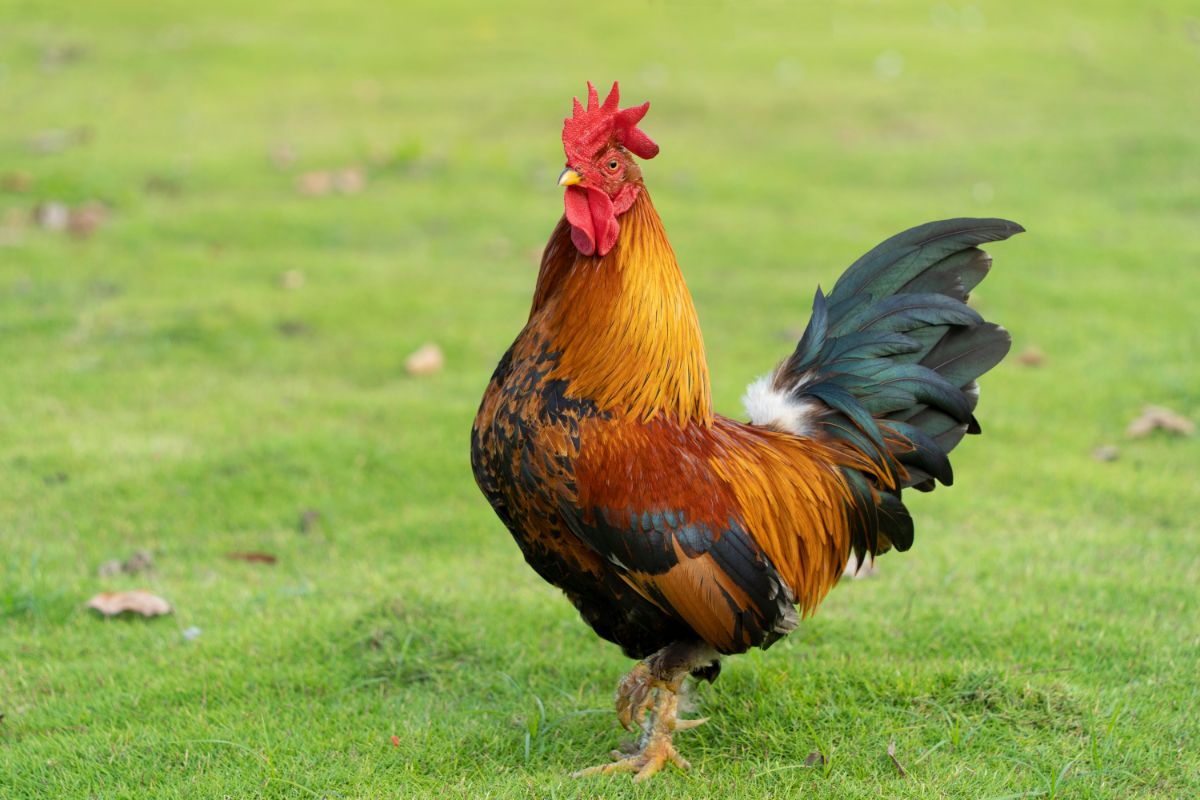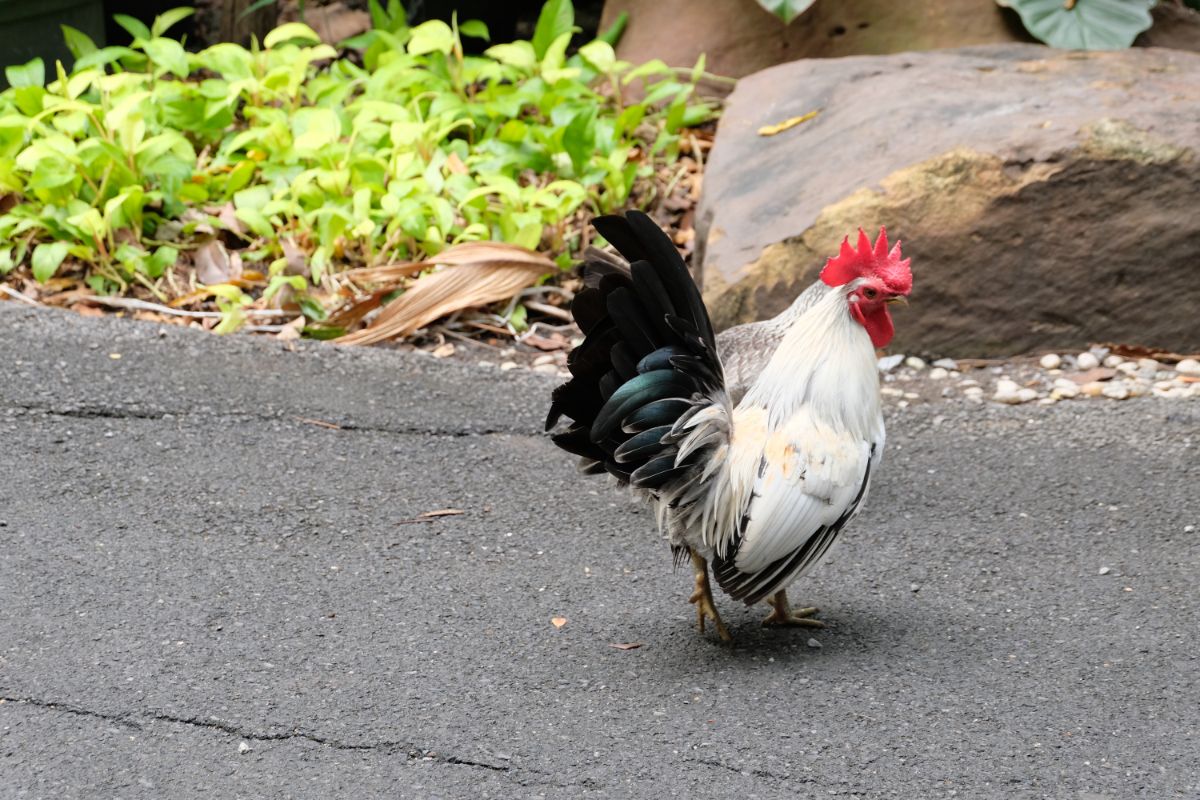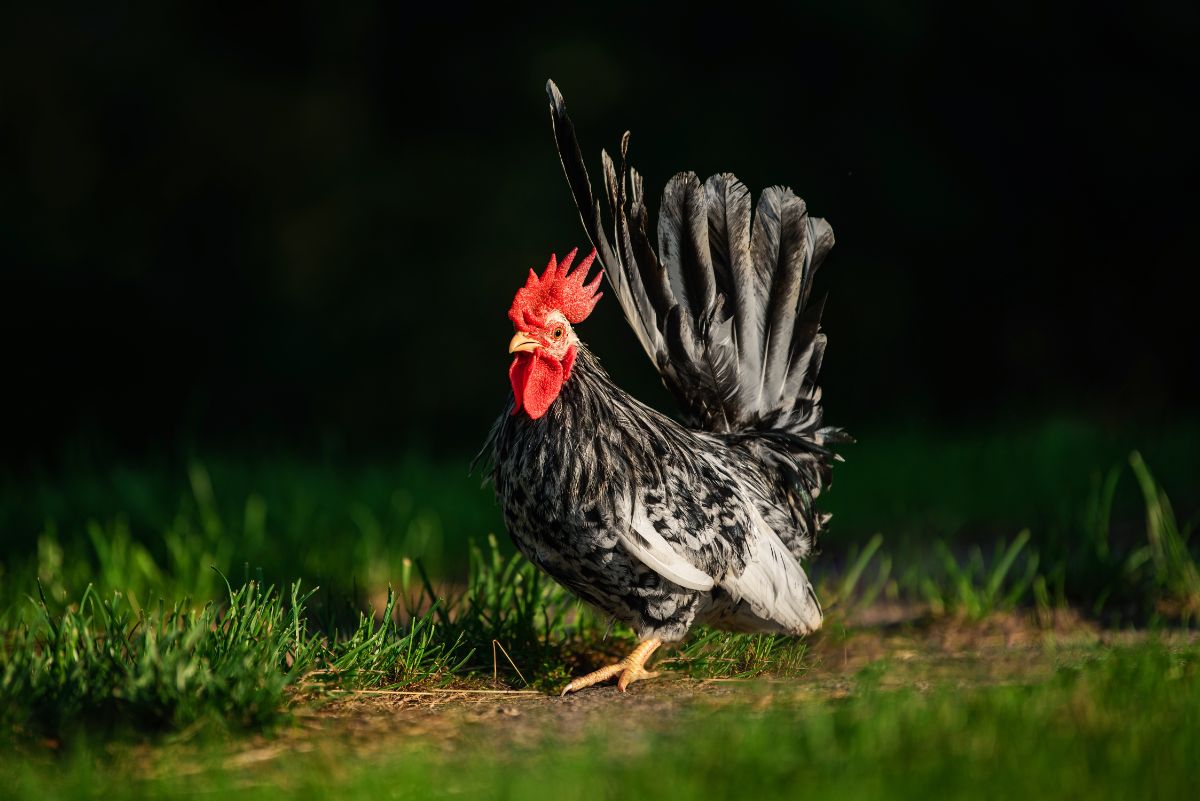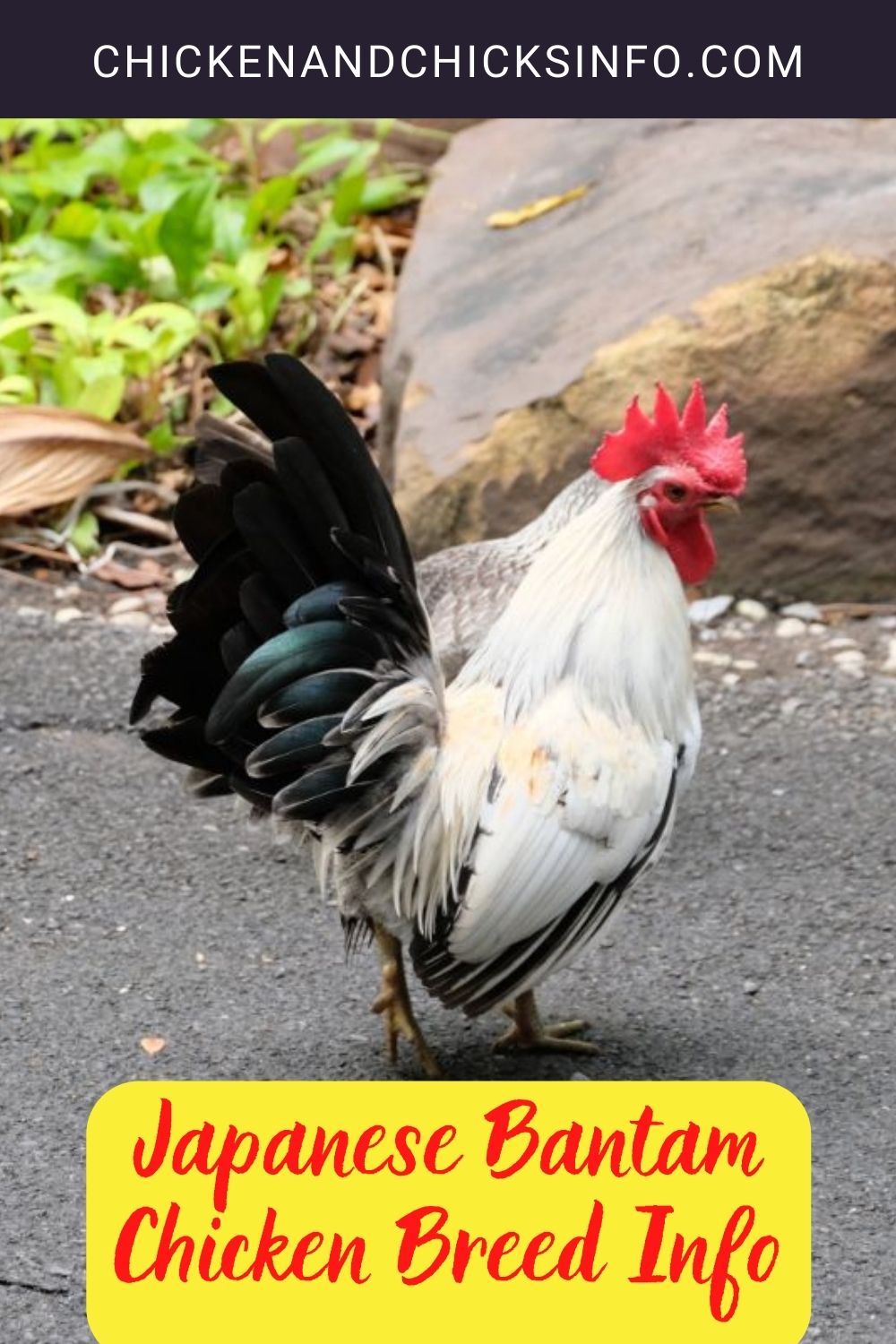The Japanese Bantam chicken is a true bantam, meaning that they have a larger counterpart that is considered a separate breed. They are not used for egg or meat production due to their small size, but are used as pets and show birds.

Hens will lay around 50 small, cream-colored eggs per year and may or may not become broody.
Jump to:
How to Buy Online Japanese Bantam Chickens

White Japanese Bantam Chicks As low as: $4.60 - Read reviews
Mottled Japanese Bantam Chicks As low as: $4.60 - Read reviews
Gray Japanese Bantam Chicks As low as: $4.60 - Read reviews
Black Japanese Bantam Chicks As low as: $4.60 - Read reviews
Black Tailed Buff Japanese Bantam Chicks As low as: $4.60 - Read reviews
Black Tailed White Japanese Bantam Chicks As low as: $4.60 - Read reviews
Japanese Bantam Chicken Breed Quick Info
Japanese Bantam Chicken Description
| Japanese Bantam Type/Size: | Bantam |
| Feather Color: | White and black, can vary |
| Leg Type: | Clean |
| Leg Color: | Yellow |
| Skin Color: | White |
| Japanese Bantam Ease of Raising/Keeping: | Easy |
| Japanese Bantam Special Care Needs: | No |
| Is the Japanese Bantam breed a common, rare, or protected breed of chicken? | Common |
Japanese Bantam Use
| Meat | No |
| Eggs | No |
| Dual Purpose | No |
| Japanese Bantam Temperament: | Docile, active |
| Japanese Bantam Ability/Likelihood to Free Range: | Yes |
Japanese Bantam Egg Production
| Egg Color | Cream |
| Egg Size | Small |
| Estimated Number of Eggs Per Year | 50 |
| Likeliness to Brood Eggs/Raise Chicks | Medium |
Japanese Bantam Meat Production
| Dressed Weight Male | N/A |
| Dressed Weight Female | N/A |
Japanese Bantam Climate Tolerance
| Heat | Excellent |
| Cold | Moderate |
Japanese Bantam Age to Maturity
| Number of Months to Reach Full Size | 4-5 Months |
| Number of Months to Start Egg Laying | 4-5 Months |
| Number of Weeks/Months to Reach Meat Harvest Size | N/A |
Japanese Bantam Size at Maturity
| Male | 1.5 lbs |
| Female | 1.25 lbs |
Origins of Japanese Bantam Chicken

The Japanese Bantam can be traced back to Japanese paintings from over 300 years ago. Over time, they were imported to other countries and eventually made their way to the United States.
Today, they are somewhat common in the U.S. and are used as an ornamental breed of chicken.
Some Things to Know About Japanese Bantam Chicken

This breed generally has white and black feathers, with other varying colors depending on the variety of the breed. These other colors can include black, buff, and white, among others. They have clean, yellow legs and white skin.
Japanese Bantams have extremely short legs, with well-spread and pointed tails that are carried above their heads. Their wings are angled down and back toward their tail.
Their combs and wattles are proportionally large. This makes them a little less cold-hardy than other breeds, as their comb and wattles are at risk for frostbite in low temperatures.
How Easy is it to Keep Japanese Bantam Chickens?

The Japanese Bantam is well-tempered and does well in confinement. They make excellent pets due to their small size and docile nature. They are a great breed for children, as well as excellent show birds, as they are easily tamed.
They are active birds and do well as free-range chickens. They are excellent foragers and will find tasty treats wherever they are allowed to wander.
They are moderately cold hardy, and do excellently in the heat. These are ideal birds if you live in a hot, humid climate. However, like all chickens, make sure they have access to plenty of fresh water and shade on hot days.
Special Care and Considerations for Japanese Bantam Chickens
The Japanese Bantam chicken, like all chickens with a large single comb and wattles, is at risk for frostbite in the winter. A swipe of vaseline can help to protect their comb and wattles in lower temperatures.
Other than that, they require no special care and are a generally healthy, hardy breed.





